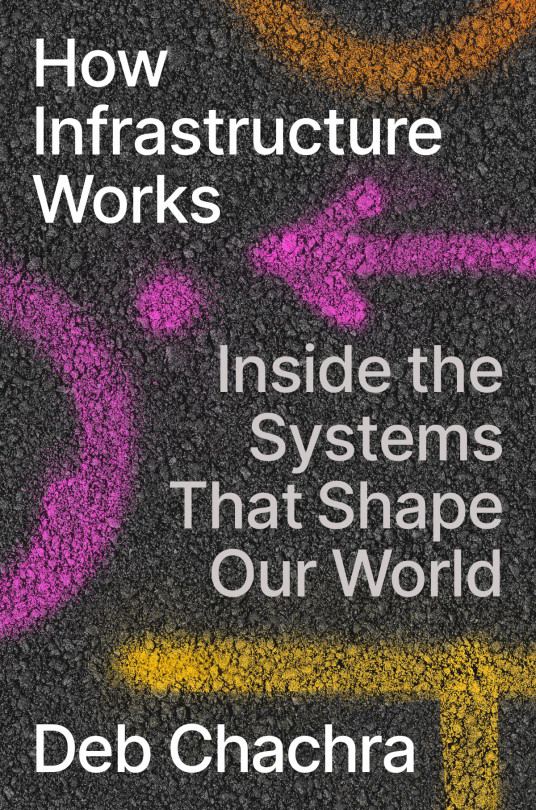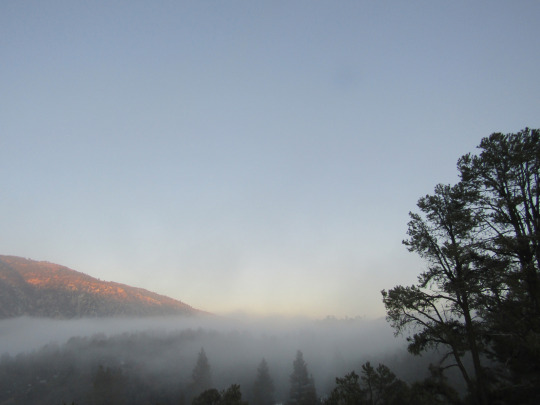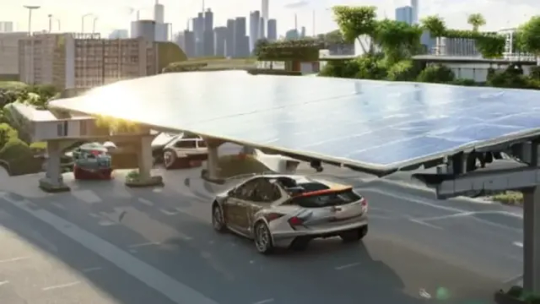#FREE ENERGY
Text
There have been many times people have solved the energy issue. Then their labs were ransacked and they were murdered 🤔
#pay attention#educate yourselves#educate yourself#knowledge is power#reeducate yourself#reeducate yourselves#think about it#think for yourselves#think for yourself#do your homework#do some research#do your own research#ask yourself questions#question everything#energy#solutions#free energy#tesla#nikola tesla#world history#history lesson#history#american history
691 notes
·
View notes
Text
Deb Chachra's "How Infrastructure Works": Mutual aid, the built environment, the climate, and a future of comfort and abundance

This Thursday (Oct 19), I'm in Charleston, WV to give the 41st annual McCreight Lecture in the Humanities. And on Friday (Oct 20), I'm at Charleston's Taylor Books from 12h-14h.

Engineering professor and materials scientist Deb Chachra's new book How Infrastructure Works is a hopeful, lyrical – even beautiful – hymn to the systems of mutual aid we embed in our material world, from sewers to roads to the power grid. It's a book that will make you see the world in a different way – forever:
https://www.penguinrandomhouse.com/books/612711/how-infrastructure-works-by-deb-chachra/
Chachra structures the book as a kind of travelogue, in which she visits power plants, sewers, water treatment plants and other "charismatic megaprojects," connecting these to science, history, and her own memoir. In so doing, she doesn't merely surface the normally invisible stuff that sustains us all, but also surfaces its normally invisible meaning.
Infrastructure isn't merely a way to deliver life's necessities – mobility, energy, sanitation, water, and so on – it's a shared way of delivering those necessities. It's not just that economies of scale and network effects don't merely make it more efficient and cheaper to provide these necessities to whole populations. It's also that the lack of these network and scale effects make it unimaginable that these necessities could be provided to all of us without being part of a collective, public project.
Think of the automobile versus public transit: if you want to live in a big, built up city, you need public transit. Once a city gets big enough, putting everyone who needs to go everywhere in a car becomes a Red Queen's Race. With that many cars on the road, you need more roads. More roads push everything farther apart. Once everything is farther apart, you need more cars.
Geometry hates cars. You can't bargain with geometry. You can't tunnel your way out of this. You can't solve it with VTOL sky-taxis. You can't fix it with self-driving cars whose car-to-car comms let them shave down their following distances. You need buses, subways and trams. You need transit. There's a reason that every plan to "disrupt" transportation ends up reinventing the bus:
https://stanforddaily.com/2018/04/09/when-silicon-valley-accidentally-reinvents-the-city-bus/
Even the cities we think of as motorists' paradises – such as LA – have vast, extensive transit systems. They suck – because they are designed for poor people – but without them, the city would go from traffic-blighted to traffic-destroyed.
The dream of declaring independence from society, of going "off-grid," of rejecting any system of mutual obligation and reliance isn't merely an infantile fantasy – it also doesn't scale, which is ironic, given how scale-obsessed its foremost proponents are in their other passions. Replicating sanitation, water, rubbish disposal, etc to create individual systems is wildly inefficient. Creating per-person communications systems makes no sense – by definition, communications involves at least two people.
So infrastructure, Chachra reminds us, is a form of mutual aid. It's a gift we give to ourselves, to each other, and to the people who come after us. Any rugged individualism is but a thin raft, floating on an ocean of mutual obligation, mutual aid, care and maintenance.
Infrastructure is vital and difficult. Its amortization schedule is so long that in most cases, it won't pay for itself until long after the politicians who shepherded it into being are out of office (or dead). Its duty cycle is so long that it can be easy to forget it even exists – especially since the only time most of us notice infrastructure is when it stops working.
This makes infrastructure precarious even at the best of times – hard to commit to, easy to neglect. But throw in the climate emergency and it all gets pretty gnarly. Whatever operating parameters we've designed into our infra, whatever maintenance regimes we've committed to for it, it's totally inadequate. We're living through a period where abnormal is normal, where hundred year storms come every six months, where the heat and cold and wet and dry are all off the charts.
It's not just that the climate emergency is straining our existing infrastructure – Chachra makes the obvious and important point that any answer to the climate emergency means building a lot of new infrastructure. We're going to need new systems for power, transportation, telecoms, water delivery, sanitation, health delivery, and emergency response. Lots of emergency response.
Chachra points out here that the history of big, transformative infra projects is…complicated. Yes, Bazalgette's London sewers were a breathtaking achievement (though they could have done a better job separating sewage from storm runoff), but the money to build them, and all the other megaprojects of Victorian England, came from looting India. Chachra's family is from India, though she was raised in my hometown of Toronto, and spent a lot of her childhood traveling to see family in Bhopal, and she has a keen appreciation of the way that those old timey Victorian engineers externalized their costs on brown people half a world away.
But if we can figure out how to deliver climate-ready infra, the possibilities are wild – and beautiful. Take energy: we've all heard that Americans use far more energy than most of their foreign cousins (Canadians and Norwegians are even more energy-hungry, thanks to their heating bills).
The idea of providing every person on Earth with the energy abundance of an average Canadian is a horrifying prospect – provided that your energy generation is coupled to your carbon emissions. But there are lots of renewable sources of energy. For every single person on Earth to enjoy the same energy diet as a Canadian, we would have to capture a whopping four tenths of a percent of the solar radiation that reaches the Earth. Four tenths of a percent!
Of course, making solar – and wind, tidal, and geothermal – work will require a lot of stuff. We'll need panels and windmills and turbines to catch the energy, batteries to store it, and wires to transmit it. The material bill for all of this is astounding, and if all that material is to come out of the ground, it'll mean despoiling the environments and destroying the lives of the people who live near those extraction sites. Those are, of course and inevitably, poor and/or brown people.
But all those materials? They're also infra problems. We've spent millennia treating energy as scarce, despite the fact that fresh supplies of it arrive on Earth with every sunrise and every moonrise. Moreover, we've spent that same period treating materials as infinite despite the fact that we've got precisely one Earth's worth of stuff, and fresh supplies arrive sporadically, unpredictably, and in tiny quantities that usually burn up before they reach the ground.
Chachra proposes that we could – we must – treat material as scarce, and that one way to do this is to recognize that energy is not. We can trade energy for material, opting for more energy intensive manufacturing processes that make materials easier to recover when the good reaches its end of life. We can also opt for energy intensive material recovery processes. If we put our focus on designing objects that decompose gracefully back into the material stream, we can build the energy infrastructure to make energy truly abundant and truly clean.
This is a bold engineering vision, one that fuses Chachra's material science background, her work as an engineering educator, her activism as an anti-colonialist and feminist. The way she lays it out is just…breathtaking. Here, read an essay of hers that prefigures this book:
https://tinyletter.com/metafoundry/letters/metafoundry-75-resilience-abundance-decentralization
How Infrastructure Works is a worthy addition to the popular engineering books that have grappled with the climate emergency. The granddaddy of these is the late David MacKay's open access, brilliant, essential, Sustainable Energy Without the Hot Air, a book that will forever change the way you think about energy:
https://memex.craphound.com/2009/04/08/sustainable-energy-without-the-hot-air-the-freakonomics-of-conservation-climate-and-energy/
The whole "Without the Hot Air" series is totally radical, brilliant, and beautiful. Start with the Sustainable Materials companion volume to understand why everything can be explained by studying, thinking about and changing the way we use concrete and aluminum:
https://memex.craphound.com/2011/11/17/sustainable-materials-indispensable-impartial-popular-engineering-book-on-the-future-of-our-built-and-made-world/
And then get much closer to home – your kitchen, to be precise – with the Food and Climate Change volume:
https://pluralistic.net/2021/01/06/methane-diet/#3kg-per-day
Reading Chachra's book, I kept thinking about Saul Griffith's amazing Electrify, a shovel-ready book about how we can effect the transition to a fully electrified America:
https://pluralistic.net/2021/12/09/practical-visionary/#popular-engineering
Chachra's How Infrastructure Works makes a great companion volume to Electrify, a kind of inspirational march to play accompaniment on Griffith's nuts-and-bolts journey. It's a lyrical, visionary book, charting a bold course through the climate emergency, to a world of care, maintenance, comfort and abundance.

If you'd like an essay-formatted version of this post to read or share, here's a link to it on pluralistic.net, my surveillance-free, ad-free, tracker-free blog:
https://pluralistic.net/2023/10/17/care-work/#charismatic-megaprojects


My next novel is The Lost Cause, a hopeful novel of the climate emergency. Amazon won't sell the audiobook, so I made my own and I'm pre-selling it on Kickstarter!
#pluralistic#books#reviews#deb chachra#debcha#engineering#infrastructure#free energy#material science#abundance#scarcity#mutual aid#maintenance#99 percent invisible#colonialism#gift guide
259 notes
·
View notes
Text
💡⚡️💡
#free energy#electricity#hidden ideas#hidden technologies#hidden truths#electric bill#truth#please share#wwg1wga
112 notes
·
View notes
Text

Rolling Fog
Jan. 5, 2024
23 notes
·
View notes
Text




#lovers#romance#lovecore#young love#romantic#fall in love#music#beabadoobee#i love you#romanticism#escapism#free energy#light academia#ethereal#fairycore#romantic academia#chaotic romance#beautiful#not my images
62 notes
·
View notes
Text
youtube
⚡️How would our society change with the widespread implementation of FFGs (Fuel-Free Generators)?
🔥🌪🌊 Imagine a city after a tornado, storm, or hailstorm the size of tennis balls that disrupts electrical communications, leaving no electricity, internet, or cellular service.
🕙 People frantically search for lost family members, friends, and colleagues. Time is running. Some are trapped under rubble or stranded on countryside roads with broken-down vehicles themselves.
❓How challenging does this situation appear without electricity and communication? Now, consider the scenario during winter, often when calamities strike, and frequently at night. What are the chances of rescuing those affected?
‼️And how would these scenarios change with FFGs? The situation would be vastly different, and many more people would survive. We desperately need FFG's as we go through this cataclysmic cycle.
#free energy#energy#creative society#facts#for you#technology#technews#techreview#ai#for free#modern#tech#Youtube
8 notes
·
View notes
Text

Golden futuristic city
#utopia#scifi#city#golden city#positive timeline#ecopunk#solarpunk#free energy#advanced technologies#futuristic#golden age#quantumpunk
13 notes
·
View notes
Text
8 notes
·
View notes
Text
Unveiling the Pitfalls and Triumphs of Solar Structures: Navigating Challenges While Embracing Sustainable Solutions


Solar Structures
Hey there, sunshine enthusiasts! Ever wonder how those sleek solar panels do their magic? Well, get ready to dive into the dazzling world of solar structures with us! In this blog post, we won't hit you with a snooze-fest of technical jargon and confusing terms – no, sir! We're here to break down the solar game in easy-peasy language, so whether you're a tech whiz or just someone curious about how we can all catch a little more sunshine, you're in the right spot.
Read the full article here
2 notes
·
View notes
Text
How to build a free energy motor. 🤔
#pay attention#educate yourselves#educate yourself#knowledge is power#reeducate yourself#reeducate yourselves#think about it#think for yourselves#think for yourself#do your homework#do some research#do your own research#ask yourself questions#question everything#free energy#diy#do it yourself#build one
185 notes
·
View notes
Text

A Tesla Coil is an electrical transformer circuit designed by Nikola Tesla in 1891. Fun stuff...
⚡️⚡️⚡️
#anime#ufos#aliens#scifi#extraterrestrials#animation#ancient aliens#comic books#fantasy#manga#tesla#tesla coil#free energy
4 notes
·
View notes
Text





Awesome Hologram Trail Fail
Dec. 6, 2023
#orgone#orgone energy#orgonite#ufo#hologram#chemtrail#planetary healing#free energy#energetic war#plane
16 notes
·
View notes
Text
World’s largest fusion reactor produces its first plasma
"A significant step forward in the quest for practical fusion energy was taken last week when the world’s newest and largest fusion reactor fired up.
Japan’s JT-60SA fusion reactor has produced its first plasma at the JT-60SA research facility, demonstrating the ability to generate a high-temperature cloud of ionized atoms. The research will advance to the next phase, which involves building and testing an experimental fusion reactor that can sustain plasma for long periods and extract useful energy from it.
Nuclear fusion reactions power the Sun and other stars. Nuclear fusion is the process of forcing together two light atomic nuclei and creating a heavier one, releasing enormous amounts of energy in the process.

On Earth, scientists are working to replicate this phenomenon and harness its potential for clean, safe, and abundant electricity production. Fusion energy could help meet the growing demand for energy from a rising global population while minimizing the environmental impact and ensuring long-term fuel availability.
The JT-60SA uses superconducting coils to generate magnetic fields that confine a blazingly hot plasma of ionized gas inside a doughnut-shaped vacuum vessel, where hydrogen nuclei can fuse and release energy. The four-story-high machine is designed to hold a plasma heated to 200 million degrees Celsius for about 100 seconds, much longer than previous large-scale tokamaks.
JT-60SA will also support ITER, the massive international fusion reactor being built in France that aims to demonstrate how fusion can generate more energy than goes into producing it. JT-60SA will test technologies and operating expertise that ITER will depend on."
continue reading article
#nuclear energy#sun#energy#plasma#electricity#power#magnetism#electromagnetism#plasma physics#international project#clean energy#free energy#technology#ITER#science#international cooperation#energy evolution
3 notes
·
View notes
